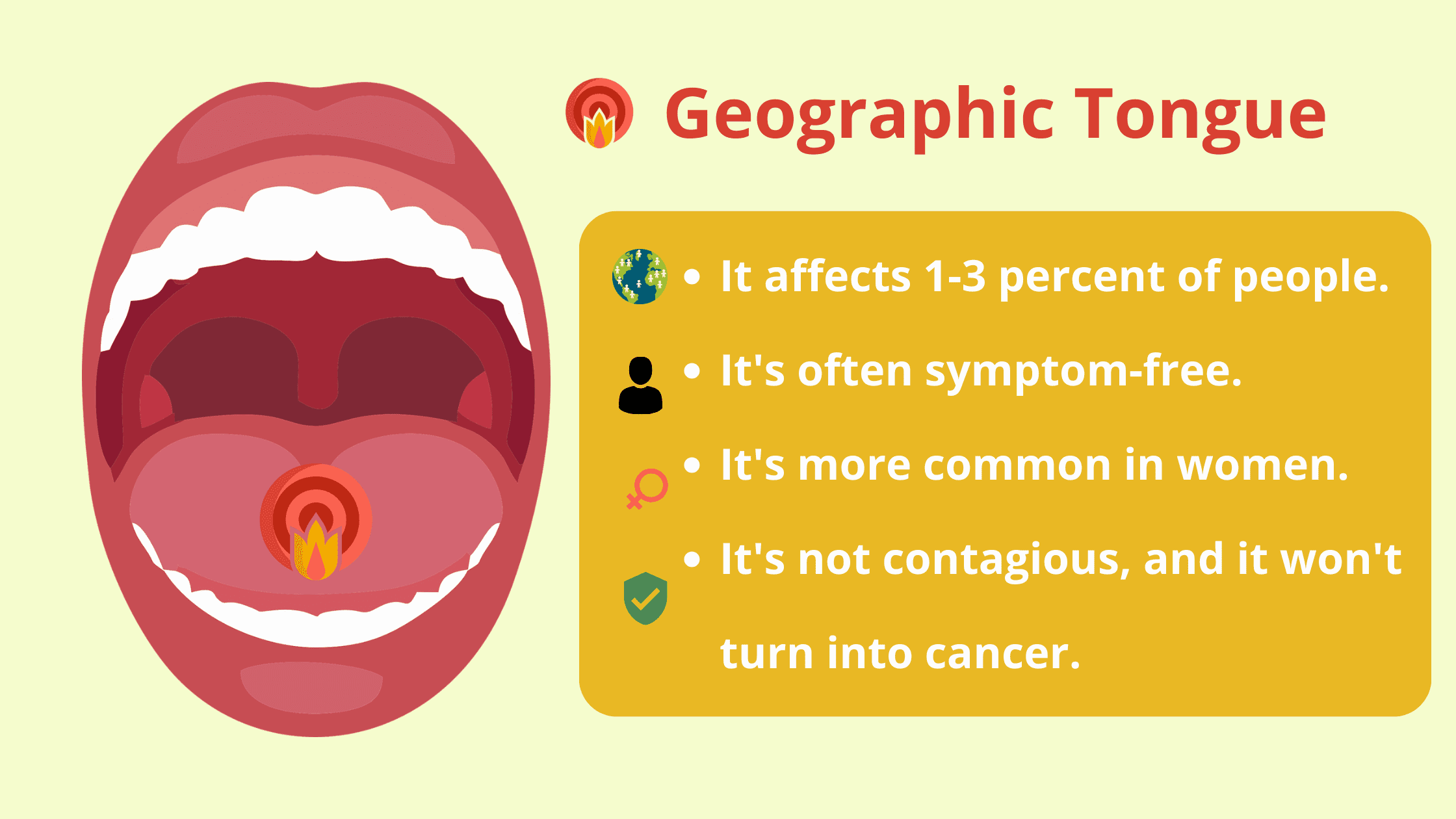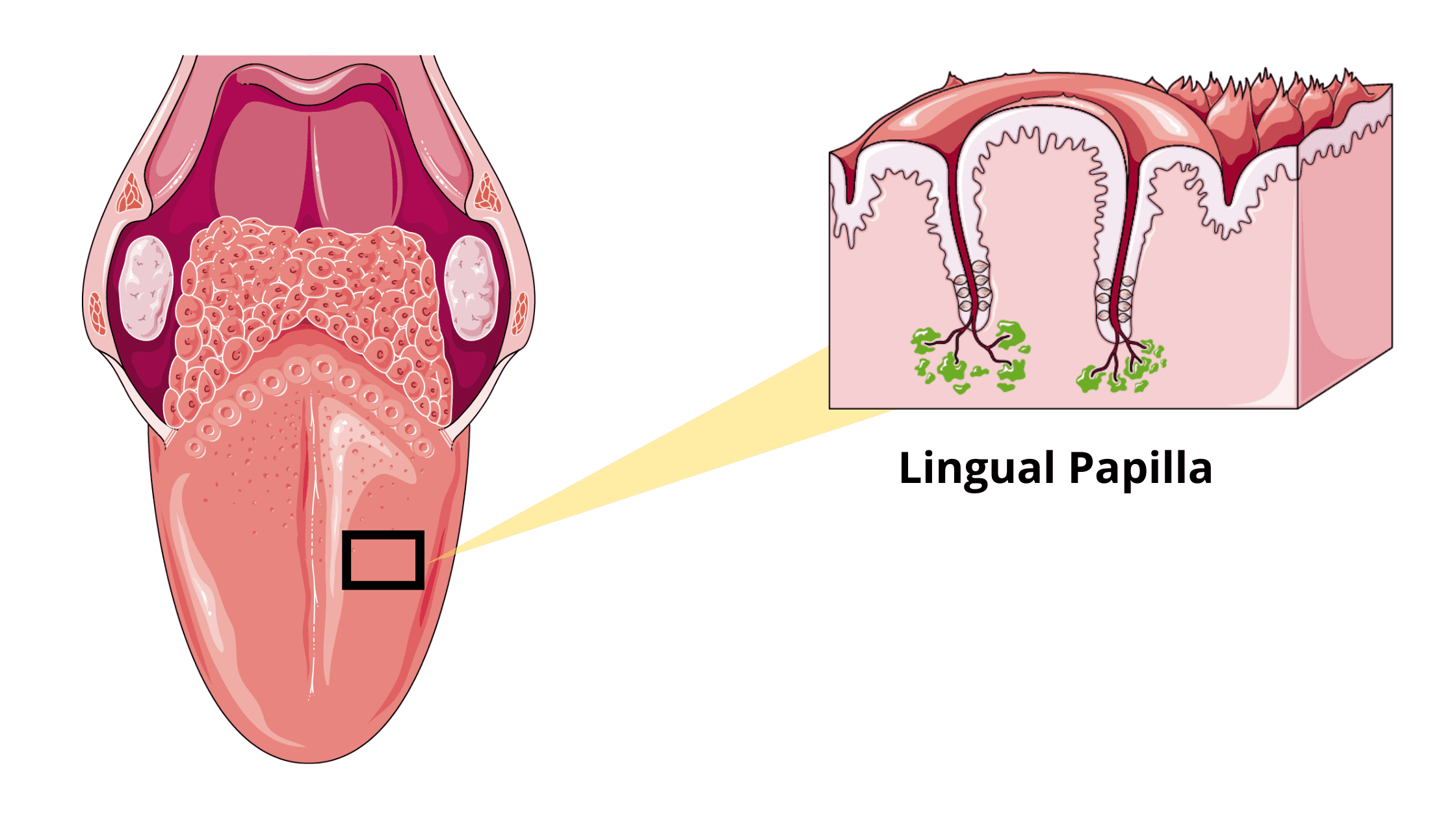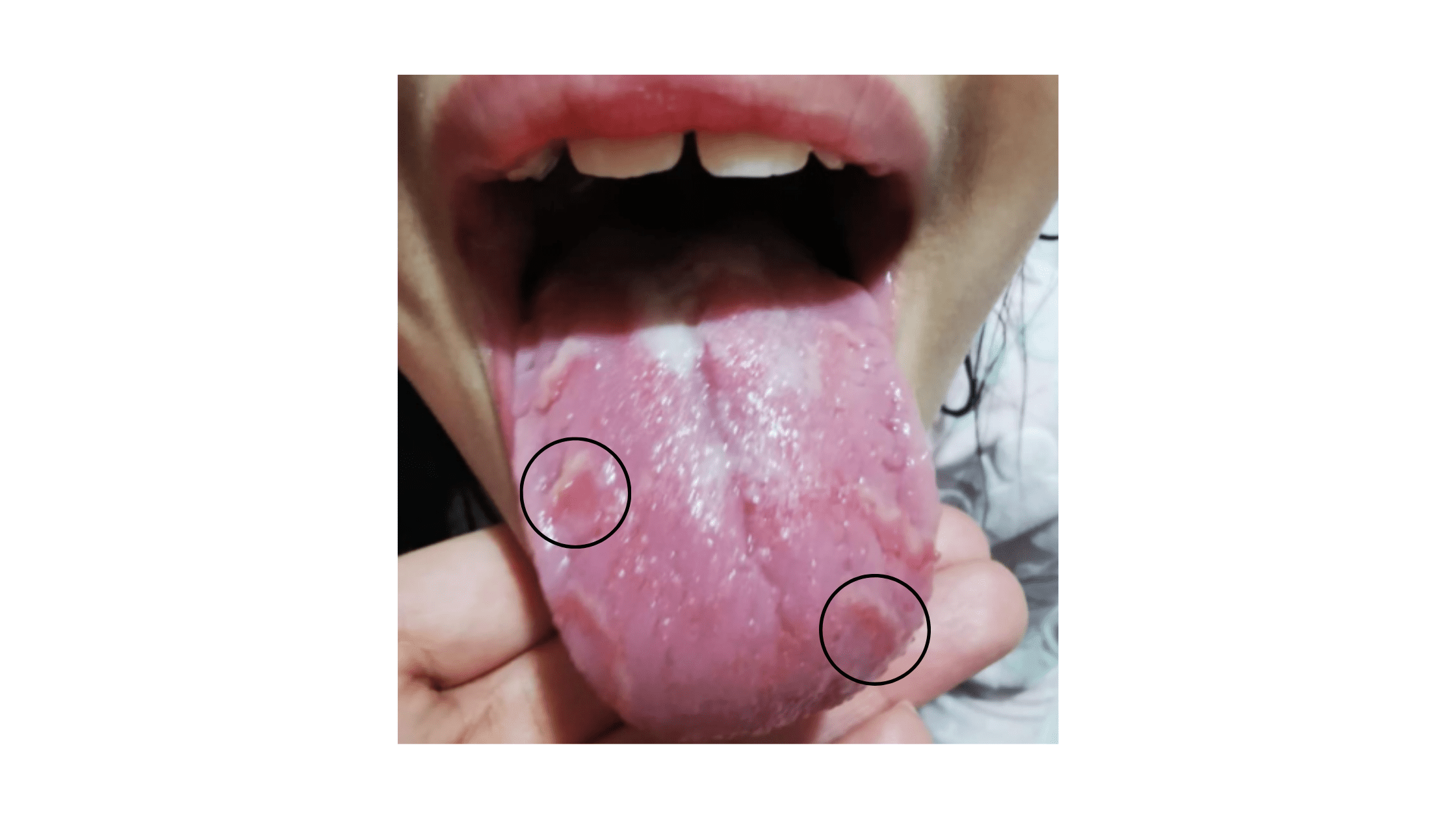Geographic Tongue: A Common Yet Mysterious Oral Condition
 Looking at your tongue in the mirror, have you noticed any red spots that seem to change position regularly over time? If so, you might be experiencing a common yet mysterious oral condition known as geographic tongue.
Looking at your tongue in the mirror, have you noticed any red spots that seem to change position regularly over time? If so, you might be experiencing a common yet mysterious oral condition known as geographic tongue.
In this article, we'll learn what geographic tongue is, what causes it, its telltale symptoms, similar conditions, and the available treatment options.
In this article:
1. What is Geographic Tongue?
2. How Does Geographic Tongue Occur?
3. Who Is Most at Risk?
4. The Symptoms
5. How Does Geographic Tongue Evolve?
6. Other Conditions that Resemble Geographic Tongue
7. Does Geographic Tongue Require Treatment?
What is Geographic Tongue?
Geographic tongue (GT) is a common but harmless mouth condition. It's so-called because it makes your tongue look like a map, with irregular red patches surrounded by white or yellow borders. These patches often occur on the top part but can also extend to the sides and bottom portion of the tongue.GT is also called benign migratory glossitis. "Migratory" means that the red patches come and go, often vanishing from one spot only to reappear in new areas. And "glossitis" simply means inflammation of the tongue.
To understand what these lesions are, let's start with a healthy tongue. Normally, your tongue has a rough texture because of numerous tiny projections called lingual papillae. These papillae have the essential job of sensing and tasting your food.

However, in geographic tongue, the inflammation targets a specific type of papillae called filiform papillae. These small, cone-shaped projections are the most numerous and contribute most to the tongue's typical rough texture.
When affected by inflammation, certain areas of the tongue lose their usual texture, appearing red and smoother than the rest of the tongue.

The less numerous fungiform papillae, which contain taste buds, remain intact. They become more visible as red dots in the smooth affected areas.
Quick Facts about Geographic Tongue
- It affects 1-3 percent of people (3).
- It's often symptom-free.
- It's more common in young adults, especially women (3).
- It's not contagious, and it won't turn into cancer.
How Does Geographic Tongue Occur?
Geographic tongue is still not fully understood. But we do know it’s an inflammation that involves complex immune reactions within the tongue.Many experts believe that it could be linked to various chronic inflammatory conditions. These include conditions like viral infections, allergies, and certain skin disorders.
One good example is psoriasis, a chronic autoimmune condition that affects the skin, causing itchy, scaly rashes. Psoriasis and geographic tongue (GT) share similar signs and tissue changes, leading some experts to believe that GT might actually be a form of psoriasis that shows up on the tongue. In fact, studies suggest that about 12% of people with psoriasis also have geographic tongue (2).
Allergies to things like food, medications, or pollen may play a role in causing the red patches seen in geographic tongue. Studies show that about 30% of people with geographic tongue also have allergies (2).
Certain nutritional deficiencies are believed to play a role as well. Nutrients such as vitamin D, B6, B12, folic acid, iron, and zinc play a key role in regulating cell function and controlling inflammation in the body. Deficiencies in these nutrients can contribute to abnormal inflammatory responses.
Who Is Most at Risk?
Aside from the mentioned causes, certain factors can increase the risk of developing geographic tongue.Women are more susceptible, about twice as much as men (5). That's partly due to hormonal changes. It's known that elevated estrogen levels during pregnancy and the use of oral contraceptives can stimulate immune responses and inflammation.
Sometimes, geographic tongue runs in families, suggesting a genetic predisposition to the condition.
Psychological factors like stress, anxiety, and depression may also play a role. They can keep cortisol levels high in the saliva, which over time may increase chronic inflammation in the mouth.
The Symptoms
Geographic tongue has unique features that set it apart from other inflammatory conditions in the mouth:- Appearance: It appears as irregular, red, smooth patches resembling a map.
- Size: The size of these red patches can vary, ranging from a few millimeters to several centimeters.
- Borders: Lesions are surrounded by well-defined and slightly raised, yellowish-white margins.
- Discomfort: Most of the time, geographic tongue is painless and symptom-free. However, occasionally, it may cause a burning sensation, especially when consuming spicy or sour foods.
- Recurrence: The patches tend to heal on their own and then reappear in new locations, giving the condition its migratory nature.
How Does Geographic Tongue Evolve?
The patches caused by geographic tongue are completely harmless and do not increase the risk of cancer.These lesions usually follow a distinct pattern. At first, the red patches on the tongue spread quickly over the first few weeks. Sometimes, they even join together, forming larger, more noticeable areas.
Over time, the inflammation lessens, and the damaged papillae start to grow back. The redness fades, and the tongue returns to its normal texture.
However, new patches often appear near the healed areas and go through the same cycle of flare-ups and healing. This pattern can repeat over months or even years.
Other Conditions that Resemble Geographic Tongue
Besides GT, several other oral conditions can trigger tongue inflammation, medically termed glossitis.These conditions are usually different from the migratory pattern seen in geographic tongue. Still, it’s important to recognize them, as some may need professional care.
- Oral Thrush: This is a fungal infection that can cause white patches on the tongue, which can often be wiped off. Unlike GT, these patches don't have the same map-like appearance.
- Trauma: Tongue injuries can occur due to various factors such as hard foods, toothbrush abrasion, or overusing harsh mouthwash. These irritations usually cause localized inflammation that goes away once the source of injury is removed.
- Lichen Planus: Lichen planus is a chronic inflammatory condition that can affect any mouth area, resulting in white, lacy patches or open sores.
- Leukoplakia: Leukoplakia can appear as painless white patches or thickened areas on the tongue that cannot be wiped off. These lesions must be taken seriously, as they sometimes carry precancerous risks.
- Erythroplakia: This is also a potentially precancerous condition that can present as red lesions on the tongue. If the redness doesn’t improve or gets worse over time, have it checked as soon as possible.
Does Geographic Tongue Require Treatment?
If geographic tongue doesn’t cause any symptoms, no specific treatment is needed. However, identifying and managing potential triggers can help prevent flare-ups and discomfort.This includes managing stress, avoiding injury to the tongue, steering clear of foods that cause sensitivity, maintaining a healthy, balanced diet, and treating any underlying health issues.
For those who experience burning or intense discomfort during meals, applying a thin layer of numbing gel or corticosteroids can provide relief.
That said, there is no cure for geographic tongue. The main goal of treatment is to reduce symptoms and make you more comfortable.
- Essential Of Oral Pathology - Book by Swapan Kumar Purkait
- Langue géographique chez l'enfant: revue de littérature (cnrs.fr)
- Geographic Tongue Disease Symptoms, Causes, Treatment | NORD (rarediseases.org)
- Geographic Tongue - StatPearls - NCBI Bookshelf (nih.gov)
- Geographic Tongue – European Association of Oral Medicine (eaom.eu)